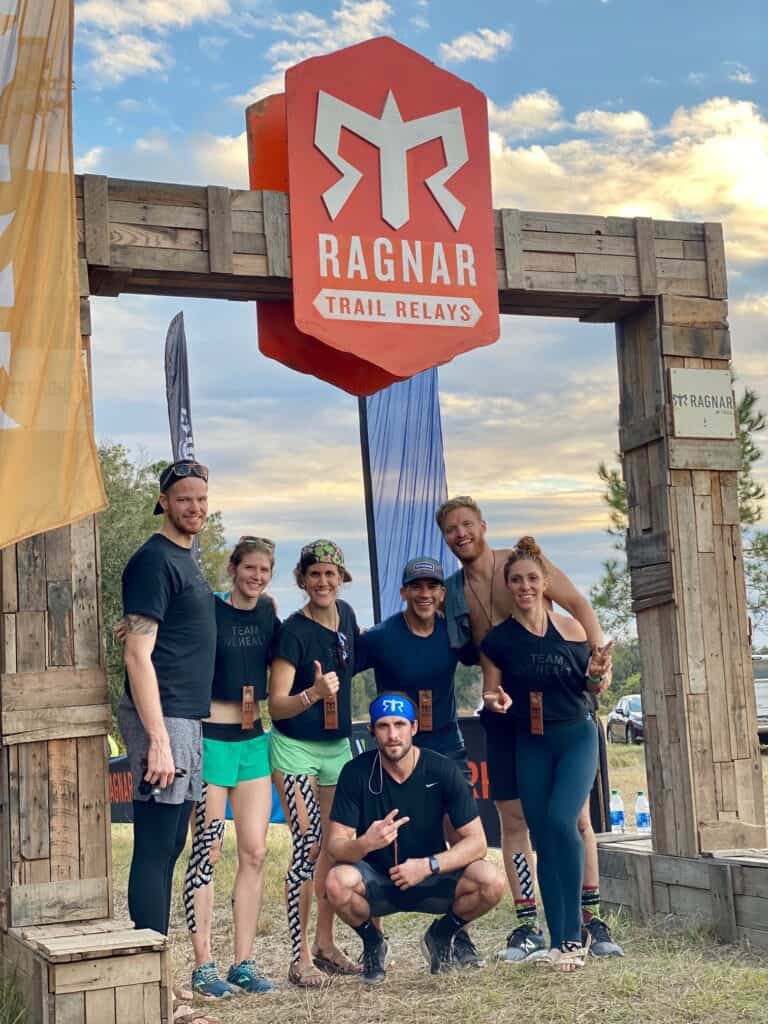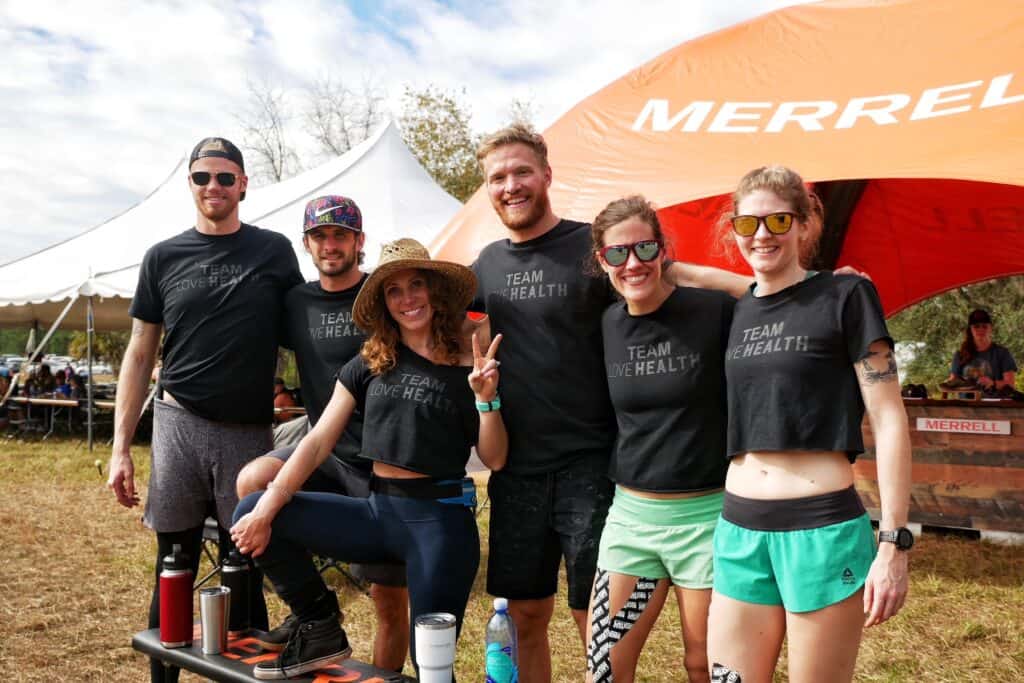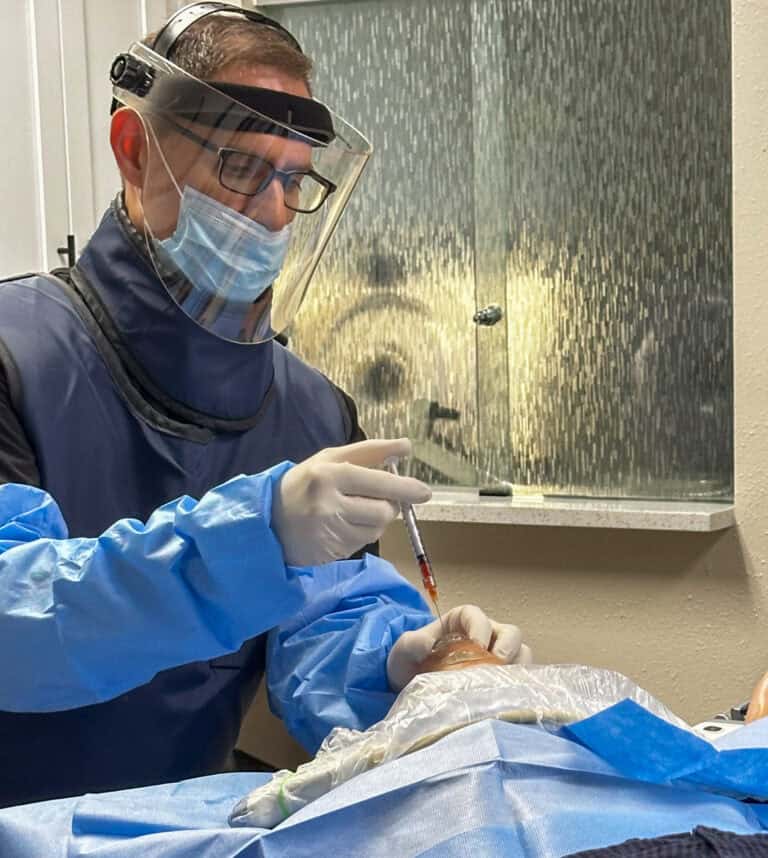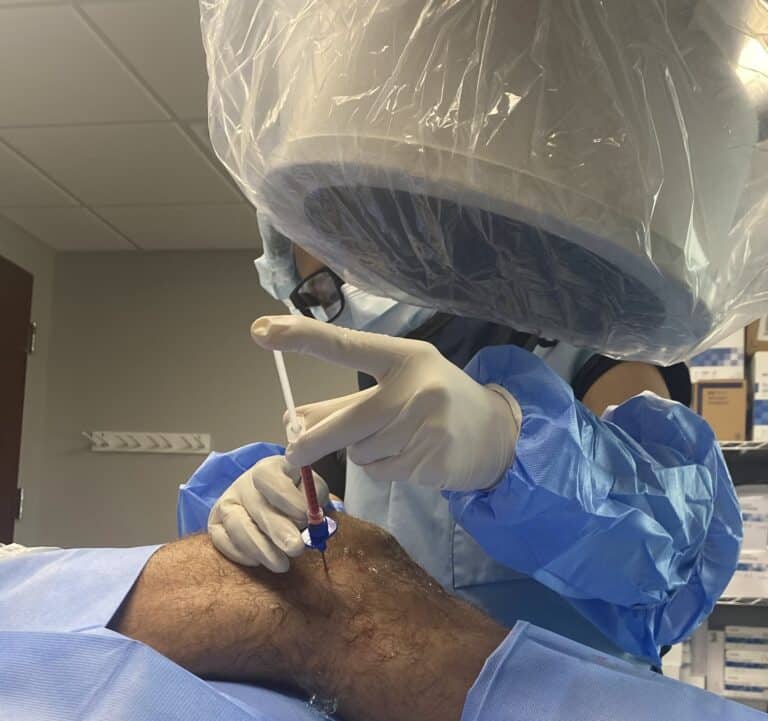Platelet Rich Plasma (PRP) is going to allow me to run well and pain-free for decades to come! I want to share the story of why and how that is. However, before diving into my story of my ankle injury and subsequent treatment of PRP, there are two things you should know about me.
First, I am a sports medicine chiropractor who works in the rehabilitation space, meaning I help patients recover from injuries in their spine as well as shoulder, knees, ankles and hips. In fact, I work a lot with patients after regenerative procedures with Regenexx at New Regeneration Orthopedics of Florida. So, I have a deep knowledge of regenerative medicine procedures and have had the opportunity to visualize the healing timeline in the weeks, months, and years after a procedure.
Second, running is my lifeblood. To put it into perspective, I am pretty sure our jogging stroller has more miles on it than my car! Also, I had data from a running watch that spanned a four-year period, and I had run over 5,000 miles and 900 hours in that time. My body withstands a ton of volume, since my running activities include recreation, transportation, racing, and fitness. So, you can imagine slowing down or stopping isn’t an option for this 36-year-old runner.
My patient treatment experience, plus my running enthusiasm, frame this story well since I know that my patients who seek regenerative medicine are trying to be able to do the things they love. Patients who seek out regenerative procedures are seeking to keep playing their sport, have pain-free sleep, or be able to get down on the floor with their grandchildren.
Now, for my regenerative medicine story:

In December of 2019, my husband (Dr. Ron Torrance of Regenexx at New Regeneration Orthopedics of Florida) and I were on an eight-man relay team for an event called the Ragnar Trail Florida Relay. This team’s task was to complete a trail relay of 128 miles as fast as possible. The way this works is: The team starts in the afternoon of one day and has one runner run at a time, completing 16 miles each in total. The team camps onsite as the runners switch every 4-6 miles. They even run through the night with headlamps and flashlights and the pitch-black Alafia River State Park trails.
We had prepared for this event for weeks, training with running and strength training, and we were ready to rock. My first leg was a 4-mile loop on dirt—starting around 9:30 p.m. It was pitch black at this time in the National Park, so I relied on a hand-held flashlight and headlamp to see the path. With my path illuminated I was feeling awesome. I was running faster than I thought was possible in these conditions, and my ego took over and I started trying to finish this loop with an impressive time.
Then suddenly, as my right foot planted in front of me, my ankle rolled. It rolled HARD. I stopped and had to take a few ginger steps to “take inventory” of what the damage seemed to be. Thankfully, I could bear weight, but I could feel the eruption of swelling immediately. The steps started as a hobble and continued into an asymmetric trot until the finish. I was able to disguise my limp and pain to my team when I arrived at the transition zone. I handed off to my husband, who took off on his first leg of the race.
When he got back, since we are both in sports medicine, I eventually told him I think I hurt myself. I downplayed it, but when I revealed the veritable eggplant that was my ankle, we both knew it was a very severe sprain.

An ankle sprain consists of some element of tissue tearing. A sprain is graded into one of three categories of severity:
- Grade I: Stretching or slight tearing of the ligament with mild tenderness, swelling and stiffness. The ankle feels stable and it is usually possible to walk with minimal pain
- Grade II: A more severe sprain, but incomplete tear with moderate pain, swelling and bruising. Although it feels somewhat stable, the damaged areas are tender to the touch and walking is painful.
- Grade III: This is a complete tear of the affected ligament(s) with severe swelling and bruising. The ankle is unstable and walking is likely not possible because the ankle gives out and there is intense pain.
In order to complete the race, we used RockTape to help the ankle pain, decrease inflammation, and provide stability to the joint.
I powered through my final two legs thanks to the tape and some exercises I knew to get the most out of my performance. However, I knew that once we got back to reality, I would need to address this like a real orthopedic injury.
The Monday after the race, I had an x-ray on my ankle to ensure there was no fracture of the bones involved in that portion of the ankle. Then, Ignatios Papas, DO of Regenexx at New Regeneration Orthopedics of Florida, performed a diagnostic ultrasound on the joint. He demonstrated a dynamic view of the integrity, or lack thereof, of one of the most vital ligaments in my ankle, the anterior talofibular ligament (ATFL). He showed me on my healthy ankle that the ligament maintained its integrity on ultrasound when he moved my ankle, but on the injured side you could see the irregular borders of the torn tendon and a lot of gapping in the joint.
This ultrasound exam confirmed our suspicions, but the biggest sign of instability came in the weeks after this injury. The swelling and bruising went down with corrective exercise and tape, but the feelings of instability increased. I would find my ankle sore after a normal run. Also, if I did a workout with any form of jumping, I could feel a physical shift in my ankle, and the surrounding muscles would get sore the next day.
I spoke with my husband, Dr. Torrance, about these feelings and remember saying, “I feel as if my ankle can do anything I ask of it at this point, but I know there is a lack of integrity in the joint. I can feel it.” He agreed that it made sense given the level of sprain and then I went on to say, “I am not that worried about the limitation I have right now, but I want to run until I’m 80! I’m worried I will get arthritis in this joint if it goes untreated.” He replied, “Sounds like PRP will really help you reach that goal.”
From my clinical experience, I know the latter to be true. I see it every day. It is the insidious movement, or what I call repetitive microtrauma, that accumulates and becomes arthritis over time. So, in March of 2020, three months after my injury, I had platelet rich plasma (PRP) treatment for my ankle.
Again, I mention I have watched procedures and worked extensively with patients after their procedures, but I was amazed at how gentle and relatively mild the treatment felt. I had stiffness for a couple days, did some therapeutic exercise, and began running within weeks.
Honestly, to this day I almost forget which ankle was treated. I am so grateful this treatment has helped me to perform at my best since then, and also prevent the fear in the back of my mind that I could have arthritis later in life. I never feel that shift in the joint or soreness in the muscles after running or exercising any more.
In fact, in 2021 my team at the same race of the injury, Ragnar Trail Florida, came in First place in the Mixed-Gender Open division! I also recently won the Sunshine Skyway 10k race. So, needless to say, no injury is holding me back. Rather, I am grateful I have more first-hand experience to share with patients about how impactful this treatment was to my life. Now, I get to use my PRP story to share how this type of procedure can help you keep doing what you love and keep doing it as long as possible.










